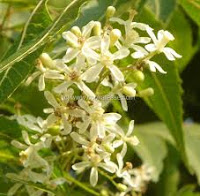 |
| "The Village Pharmacy" Image from tutornext.com |
1) Alexander, T., Knutson, A. and Harrington, M. (1999). The Best of Growing Edge. Retrieved from http://books.google.ca/books?id=spOi7N2slikC&pg=PA154&lpg=PA155&ots=kmc7pfTM0F&dq=cultures+that+use+neem#v=onepage&q=cultures%20that%20use%20neem&f=false
2) Board, N. (2008). Handbook on Neem and Allied products. Retrieved from http://books.google.com/books?id=dxOOnHxdJFwC&pg=PA201&lpg=PA202&dq=side+effects+of+neem#v=onepage&q=side%20effects%20of%20neem&f=false
3)Botelho, M.A., Araujo dos Santos, R., Martins, J.G., Carvalho, C.O., Paz, M.C., Azenha, C., Ruela, R.S., Queiroz, D. B., Ruela, W. S., Marinho, G. and Ruela, F.L. (2008). Efficacy of a mouthrinse based on leaves of the neem tree (Azadirachta indica) in the treatment of patients with chronic gingivitis: A double-blind, randomized, controlled trial. E-Journal from the Journal of Medicinal Plants Research. 2(11), 341-346. Retrieved from www.academicjournals.org/jmpr/PDF/pdf2008/.../Botelho%20et%20al.pdf
4) Carter, J.M. (2010). Evidence-based Medicine: An Overview of Key Concepts. E-Journal from the Journal of Ostomy Wound Management. 56(4), 68-85. Retrieved from http://www.ncbi.nlm.nih.gov/pubmed/204242944
5) Dr. Rahman. (n.d.). Neem: The Wonder Tree. Retrieved from http://www.neemfromindia.com/neem_articles.php#2
6)Ganguli, S. (2002). In this issue. E-Journal from the Current Science. 82 (11). Retrieved from http://www.ias.ac.in/currsci/jun102002/1303.pdf
7) Hanum, I.F. and Van der Maesen, L.J.G (Eds.). (1997). PROSEA: Plant Resources of South-East Asia 11, Auxillary Plants. Retrieved from http://books.google.com/books?ei=qZ_wTPzSAenfnQe3lsWrCw&ct=result&id=H-NdErdm0W4C&dq=neem%27s+active+components&q=neem+uses+today#v=onepage&q=neem%20uses%20today&f=false
8) Koh, H.L., Kian, C.T. and Tan, C.H. (2009). A guide to medicinal plants: an illustrated, scientific and medicinal approach. Retrieved from http://books.google.com/books?id=HFJWD9bwm9oC&printsec=frontcover#v=onepage&q&f=false
9) Kumar, G.H., Priyadarsini, R.V., Vinothini, G., Letchoumy, P.V. and Nagini, S. (2010). The neem limonoids azadirachtin and nimbolide inhibit cell proliferation and induce apoptosis in an animal model of oral oncogenesis. E-Journal from the Invest New Drugs. 28, 392–401. Retrieved from http://www.ncbi.nlm.nih.gov/pubmed/19458912
10) McIntyre, A. (2005). Herbal treatment of children: Western and Ayurvedic perspectives. Retrieved from http://books.google.com/books?id=QLin14nRVBsC&printsec=frontcover#v=onepage&q&f=false
11) Mehta, B. and Mehta, M. (2005). Organic Chemistry. Retrieved from http://books.google.com/books?id=QV6cwXA9XkEC&printsec=frontcover#v=onepage&q&f=false
12)Patel, J.P., Hemavathi, K.G. and Bhatt, J.D. (2005). Study of the antinociceptive effect of neem leaf extract and its interaction with morphine in mice. E-Journal from the Indian Journal of Pharmacology. 37(1), 37-38. Retrieved from http://www.ijp-online.com/article.asp?issn=0253-7613;year=2005;volume=37;issue=1;spage=37;epage=38;aulast=Patel
13) Singh, K.K., Phogat, S., Tomar, A., and Dhillon R.S. (Eds.). (2008). Neem: A Treatise. Retrieved from http://books.google.ca/books?id=PyYRUCoIDk4C&printsec=frontcover#v=onepage&q&f=false
14) Subapriya. R and Nagini, S. (2005). Medicinal Properties of Neem Leaves: A Review. E-Journal from the Current Medicinal Chemistry - Anti-Cancer Agents. 5 (2), 149-156. Retrieved from www.ncbi.nlm.nih.gov/pubmed/15777222
15) Wynn, S.G. and Fougère, B. (2007). Veterinary Herbal Medicine. Retrieved from http://books.google.com/books?id=iLbZDzumqt0C&printsec=frontcover#v=onepage&q&f=false
 |
| Image from ineedcoffee.com |
Additional Links:-



















